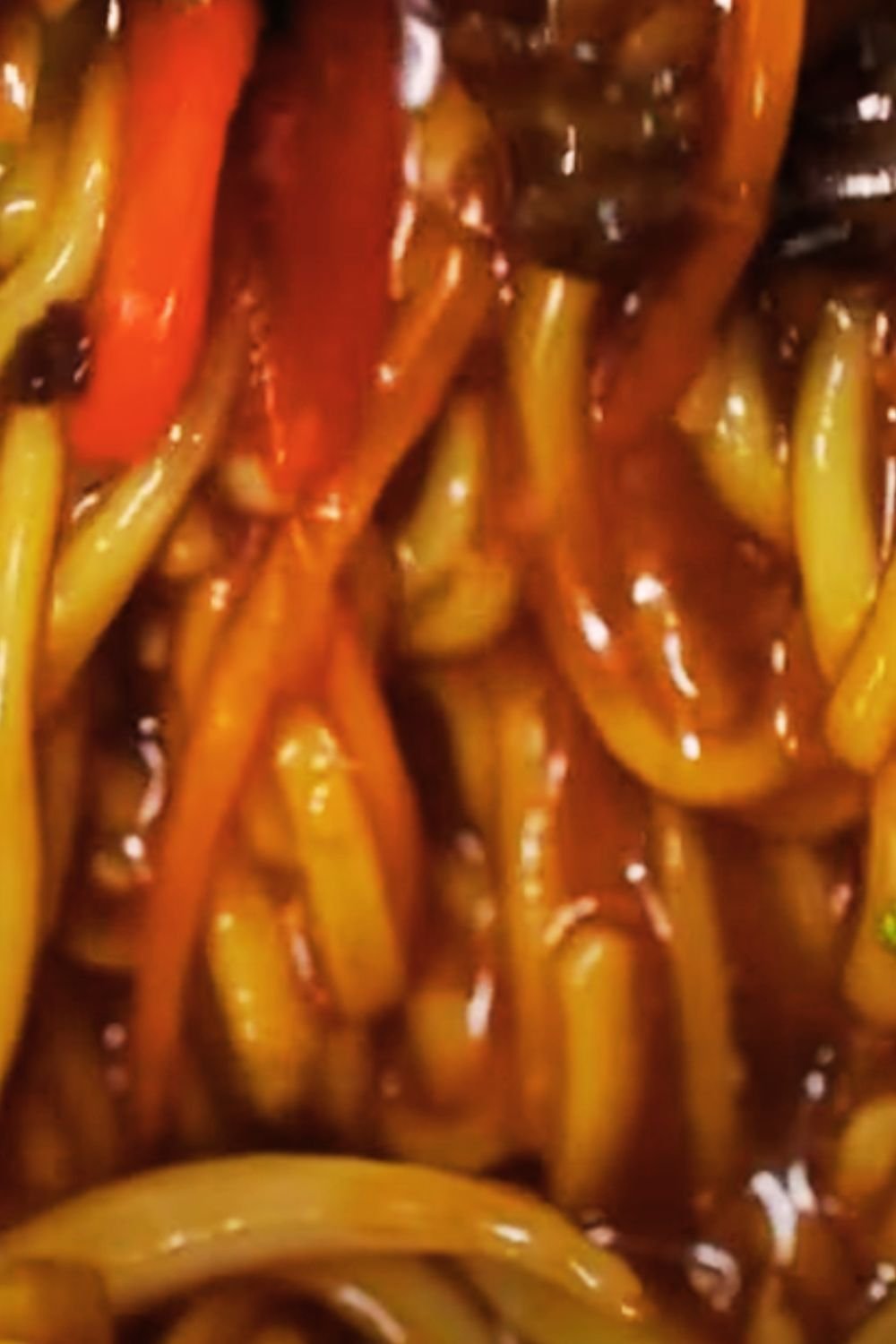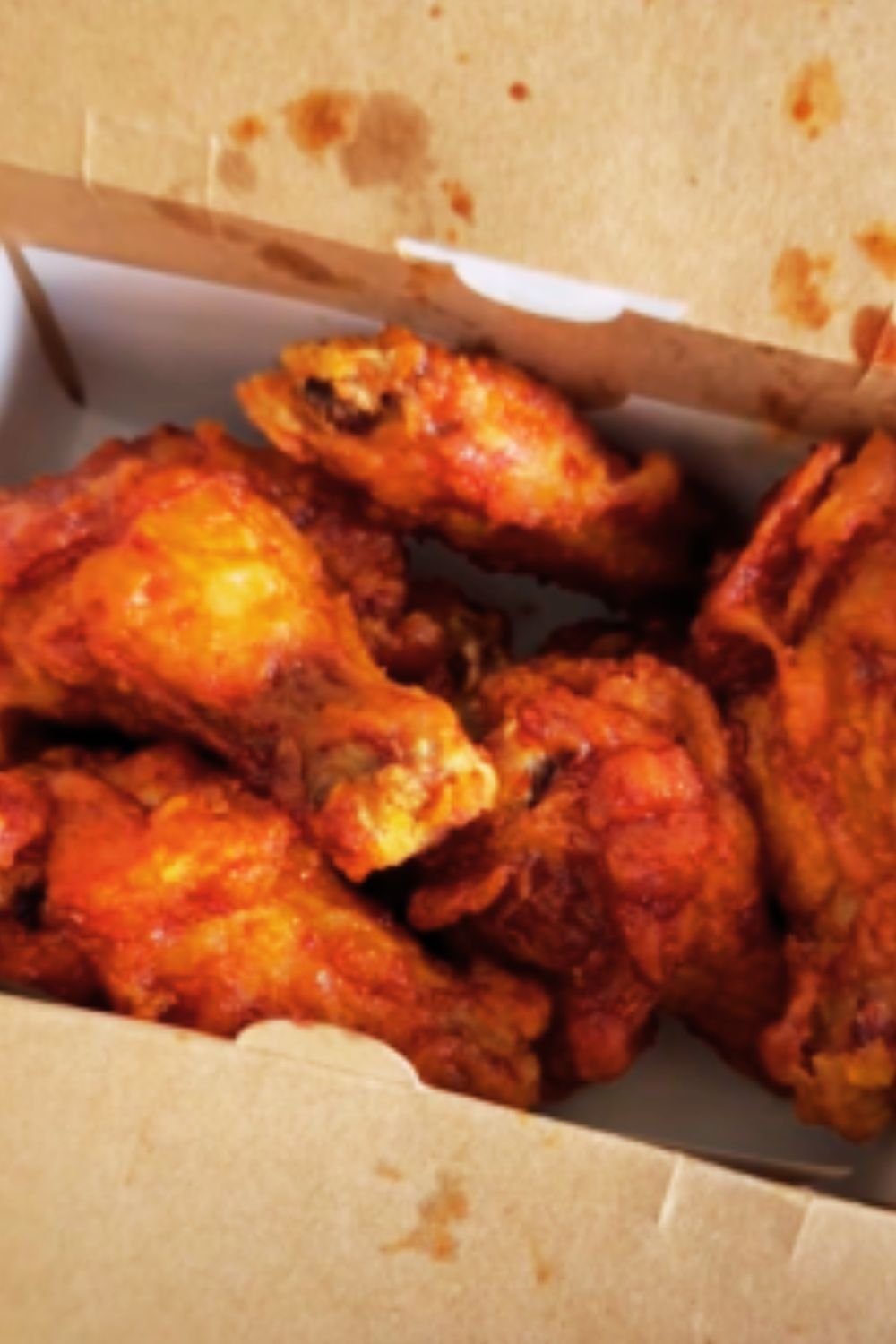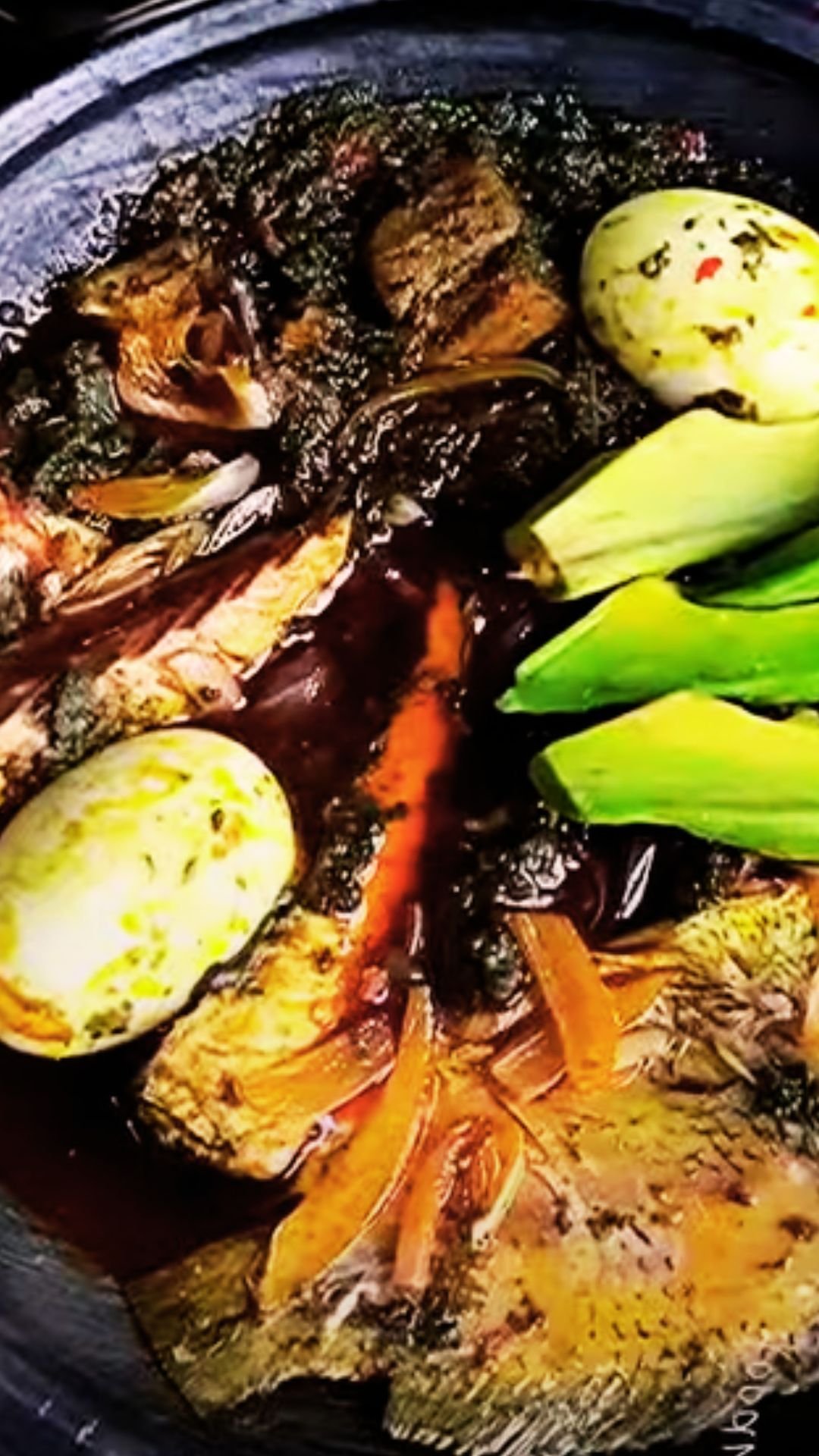When I first attempted to recreate my favorite Chinese takeout lo mein at home, I’ll admit it was a disaster. The noodles were mushy, the sauce was bland, and the vegetables were either overcooked or undercooked. But after years of perfecting my technique and learning from both mistakes and successes, I’ve developed a foolproof method that creates restaurant-quality lo mein in my own kitchen.
Lo mein, which literally translates to “stirred noodles” in Cantonese, is one of the most beloved Chinese-American dishes. Unlike its crispy cousin chow mein, lo mein features soft, chewy noodles that are tossed with vegetables, protein, and a savory sauce. The beauty of this dish lies in its versatility and the perfect balance of textures and flavors.
Understanding Lo Mein: More Than Just Noodles
Lo Mein Noodles : Fresh wheat noodles, typically egg noodles, that are boiled until tender and then stir-fried with other ingredients
Sauce Base : A combination of soy sauce, oyster sauce, and sesame oil that creates the signature umami flavor
Wok Hei : The distinctive “breath of the wok” flavor achieved through high-heat cooking
Mise en Place : The French culinary term for having all ingredients prepared and ready before cooking begins
The key to exceptional lo mein isn’t just in the recipe—it’s in understanding the technique. When I cook lo mein, I’m not just throwing ingredients together; I’m orchestrating a carefully timed dance where each component plays its part at precisely the right moment.
Essential Ingredients for Authentic Lo Mein
Noodles: The Foundation
The heart of any great lo mein is the noodles themselves. I’ve experimented with countless varieties, and my preference has settled on fresh lo mein noodles from the refrigerated section of Asian grocery stores. These noodles have the perfect chewiness and absorb flavors beautifully without becoming mushy.
If fresh lo mein noodles aren’t available, I’ve found that dried egg noodles work as an excellent substitute. The key is to slightly undercook them during the initial boiling phase since they’ll continue cooking in the wok.
The Sauce: Where Magic Happens
My signature lo mein sauce has evolved over years of experimentation. I start with a base of light soy sauce and dark soy sauce—the light provides saltiness and umami, while the dark adds color and a subtle sweetness. Oyster sauce brings depth and richness, while a touch of sesame oil adds that distinctive nutty aroma.
Here’s my secret: I always add a small amount of cornstarch to my sauce mixture. This helps it cling to the noodles and creates that glossy finish you see in restaurant lo mein.
Vegetables: Color, Texture, and Nutrition
The vegetables in lo mein serve multiple purposes. They add color, provide textural contrast, and boost the nutritional value. My go-to combination includes:
- Bean sprouts: These provide a satisfying crunch and cook quickly
- Carrots: Julienned thin for quick cooking and visual appeal
- Bell peppers: Any color works, but I prefer red for its sweetness
- Scallions: Both white and green parts, used at different stages
- Cabbage: Adds bulk and absorbs flavors wonderfully
My Perfected Lo Mein Recipe
Ingredients
| Component | Ingredient | Quantity | Notes |
|---|---|---|---|
| Noodles | Fresh lo mein noodles | 1 lb | Or 12 oz dried egg noodles |
| Protein | Chicken breast, sliced thin | 8 oz | Can substitute with beef, pork, or tofu |
| Vegetables | Bean sprouts | 2 cups | Fresh, not canned |
| Carrots, julienned | 1 medium | Cut into matchsticks | |
| Bell pepper, sliced | 1 large | Any color preferred | |
| Napa cabbage, chopped | 2 cups | Regular cabbage works too | |
| Scallions | 4 stalks | Separate white and green parts | |
| Sauce | Light soy sauce | 3 tbsp | Low sodium preferred |
| Dark soy sauce | 1 tbsp | For color and depth | |
| Oyster sauce | 2 tbsp | Vegetarian version available | |
| Sesame oil | 1 tsp | Pure, not blended | |
| Cornstarch | 1 tsp | For thickening | |
| Sugar | 1 tsp | Balances saltiness | |
| Aromatics | Garlic, minced | 3 cloves | Fresh only |
| Fresh ginger, minced | 1 tbsp | Peel before mincing | |
| Cooking | Vegetable oil | 3 tbsp | High smoke point |
| Chicken broth | 2 tbsp | Or water if needed |
Preparation Steps
Step 1: Prepare the Sauce I always start by whisking together all sauce ingredients in a small bowl. The cornstarch needs to be completely dissolved to prevent lumps. This mixture sits while I prepare everything else, allowing the flavors to meld.
Step 2: Cook the Noodles Bring a large pot of salted water to a rolling boil. Add the noodles and cook according to package directions, but reduce the time by 1-2 minutes since they’ll finish cooking in the wok. Drain and rinse with cold water to stop the cooking process, then toss with a small amount of oil to prevent sticking.
Step 3: Prep All Ingredients This is where mise en place becomes crucial. I slice all vegetables, mince the aromatics, and have everything within arm’s reach of my stove. Lo mein cooks quickly, and there’s no time to prep once the wok heats up.

Step 4: Heat the Wok I heat my wok over high heat until it’s smoking. This high temperature is essential for achieving that characteristic wok hei flavor. If you don’t have a wok, a large skillet works, but the wok’s shape allows for better heat distribution and easier tossing.
Step 5: Cook the Protein Add oil to the hot wok, then immediately add the sliced chicken. I spread it out in a single layer and let it sear without moving for about 30 seconds. This creates a beautiful golden color and prevents sticking. Stir-fry until just cooked through, about 2-3 minutes, then remove to a plate.
Step 6: Stir-Fry Vegetables In the same wok, add the harder vegetables first—carrots and bell peppers. These need more time to cook. After about 1 minute, add the cabbage and white parts of the scallions. The bean sprouts go in last since they cook almost instantly.
Step 7: Combine Everything Return the chicken to the wok, add the drained noodles, and give the sauce mixture a quick stir (the cornstarch settles). Pour the sauce over everything and toss vigorously with tongs or chopsticks. The noodles should be evenly coated and glistening.
Step 8: Final Touches Remove from heat and immediately garnish with the green parts of the scallions. The residual heat will soften them slightly while maintaining their fresh flavor and vibrant color.
Advanced Techniques for Restaurant-Quality Results
Temperature Control
One mistake I made early on was not maintaining high enough heat throughout the cooking process. Lo mein requires intense heat to achieve the proper texture and flavor development. I learned to work quickly and keep the wok hot, even between additions of ingredients.
Noodle Handling
The way you handle the noodles makes a significant difference. I’ve found that slightly undercooking them initially and then finishing them in the wok creates the perfect texture—tender but still with a slight chew. Overcooked noodles become mushy and break apart during stir-frying.
Sauce Application
The timing of sauce addition is critical. I add it when the wok is still very hot, which helps the sauce reduce slightly and intensify in flavor. The cornstarch helps it cling to the noodles, creating that glossy appearance characteristic of restaurant lo mein.
Nutritional Benefits and Variations
Nutritional Profile
| Nutrient | Per Serving (1 cup) | Daily Value % |
|---|---|---|
| Calories | 285 | 14% |
| Protein | 18g | 36% |
| Carbohydrates | 35g | 12% |
| Fiber | 3g | 12% |
| Fat | 8g | 12% |
| Sodium | 890mg | 39% |
| Iron | 2.5mg | 14% |
| Vitamin C | 45mg | 50% |
| Vitamin A | 3500 IU | 70% |
Protein Variations
Beef Lo Mein: I use flank steak, sliced thin against the grain. The key is marinating it briefly in soy sauce and cornstarch before cooking.
Pork Lo Mein: Pork tenderloin works beautifully, cut into thin strips. It cooks quickly and stays tender.
Vegetarian Lo Mein: I substitute firm tofu, pressed and cubed, or add more vegetables like mushrooms and snow peas.
Seafood Lo Mein: Shrimp is my favorite seafood option. I cook it separately and add it back at the end to prevent overcooking.
Vegetable Combinations
The beauty of lo mein lies in its adaptability. I’ve created countless variations based on seasonal availability:
Spring Version: Snow peas, asparagus, and fresh peas Summer Version: Zucchini, yellow squash, and fresh corn Fall Version: Broccoli, cauliflower, and mushrooms Winter Version: Hearty cabbage, carrots, and bean sprouts
Troubleshooting Common Lo Mein Problems
Mushy Noodles
This is the most common issue I encounter when teaching others to make lo mein. The solution is twofold: first, undercook the noodles during the initial boiling phase, and second, work quickly during the stir-frying process.
Bland Flavor
If your lo mein tastes flat, the issue is usually insufficient sauce or improper seasoning balance. I always taste my sauce mixture before adding it to the wok and adjust as needed. Remember, the sauce should taste slightly stronger than you want the final dish since it will be diluted by the noodles and vegetables.
Soggy Vegetables
Overcooking vegetables is another common mistake. I add them to the wok in order of cooking time required, starting with the firmest vegetables first. Bean sprouts should still have a slight crunch when served.
Uneven Sauce Distribution
This happens when the sauce ingredients aren’t properly mixed or when the wok isn’t hot enough. I always give my sauce mixture a final stir before adding it to the wok, and I make sure the wok is smoking hot.
Serving Suggestions and Pairings
Lo mein is wonderfully versatile and can be served as either a main dish or a side. When I serve it as a main course, I like to accompany it with:
Complementary Dishes: Hot and sour soup, egg rolls, or potstickers create a balanced Chinese meal. The soup provides a nice contrast to the rich, savory noodles.
Fresh Additions: I often serve lo mein with fresh cucumber slices or a simple cabbage slaw to cut through the richness.
Garnish Options: Toasted sesame seeds, chopped peanuts, or a sprinkle of red pepper flakes add texture and flavor interest.
Storage and Reheating Tips
Proper Storage
Lo mein keeps well in the refrigerator for up to 3 days when stored in an airtight container. I always let it cool completely before refrigerating to prevent condensation from making the noodles soggy.
Reheating Methods
Microwave Method: Add a splash of water or broth to prevent drying out. Heat in 30-second intervals, stirring between each interval.
Stovetop Method: My preferred method involves reheating in a skillet with a small amount of oil over medium heat. This helps restore some of the original texture.
Oven Method: Spread in a baking dish, cover with foil, and heat at 350°F for about 10 minutes.
Q&A Section
Q: Can I make lo mein ahead of time for meal prep? I don’t recommend making lo mein too far in advance because the noodles can become mushy. However, you can prep all your ingredients and sauce up to a day ahead. The actual cooking takes only about 10 minutes, so it’s perfect for quick weeknight dinners.
Q: What’s the difference between lo mein and chow mein? The main difference is in the noodle preparation. Lo mein uses soft, boiled noodles that are tossed with ingredients, while chow mein features noodles that are pan-fried until crispy. Both are delicious, but they offer completely different textures.
Q: Can I use spaghetti instead of lo mein noodles? While it’s not traditional, spaghetti can work in a pinch. I recommend using fresh linguine or fettuccine for better results, as they’re closer in texture to lo mein noodles. The key is to undercook them slightly during the initial boiling.
Q: How do I prevent my lo mein from being too salty? Start with less soy sauce than you think you need—you can always add more. I also use low-sodium soy sauce and taste the sauce mixture before adding it to the wok. Remember that oyster sauce is also quite salty, so balance is key.
Q: Why does my homemade lo mein not taste like restaurant lo mein? The main culprits are usually insufficient heat and missing the wok hei flavor. Restaurants use extremely high heat that’s difficult to replicate at home. Make sure your wok or pan is smoking hot before adding ingredients, and work quickly.
Q: Can I freeze cooked lo mein? I don’t recommend freezing cooked lo mein because the noodles become mushy when thawed. It’s better to freeze the components separately and assemble them fresh when ready to eat.
Q: What vegetables work best in lo mein? I prefer vegetables that cook quickly and maintain some texture. Bean sprouts, bell peppers, carrots, and cabbage are my staples. Avoid vegetables with high water content like tomatoes or zucchini, which can make the dish watery.
Q: How can I make my lo mein spicier? I add heat through fresh chilies, chili garlic sauce, or sriracha mixed into the sauce. Red pepper flakes work too, but add them early in the cooking process to bloom their flavor in the oil.
Q: Is lo mein healthy? Lo mein can be quite nutritious, especially when loaded with vegetables and lean protein. The main concerns are sodium content and refined carbohydrates. I use low-sodium soy sauce and add plenty of vegetables to boost the nutritional value.
Q: Can I make lo mein without oyster sauce? Absolutely! You can substitute with additional soy sauce, hoisin sauce, or even a vegetarian oyster sauce made from mushrooms. The flavor will be different but still delicious.
Making perfect lo mein at home is absolutely achievable with the right technique and ingredients. The key is understanding that it’s not just about mixing noodles with sauce—it’s about creating a harmony of flavors and textures through proper timing and heat control. With practice, you’ll be creating restaurant-quality lo mein in your own kitchen, customized exactly to your taste preferences.
Remember, cooking is about experimentation and finding what works best for you. My recipe is a starting point, but don’t be afraid to adjust seasonings, try different vegetables, or experiment with various proteins. The beauty of lo mein lies in its versatility and the satisfaction of creating something delicious from simple ingredients.


